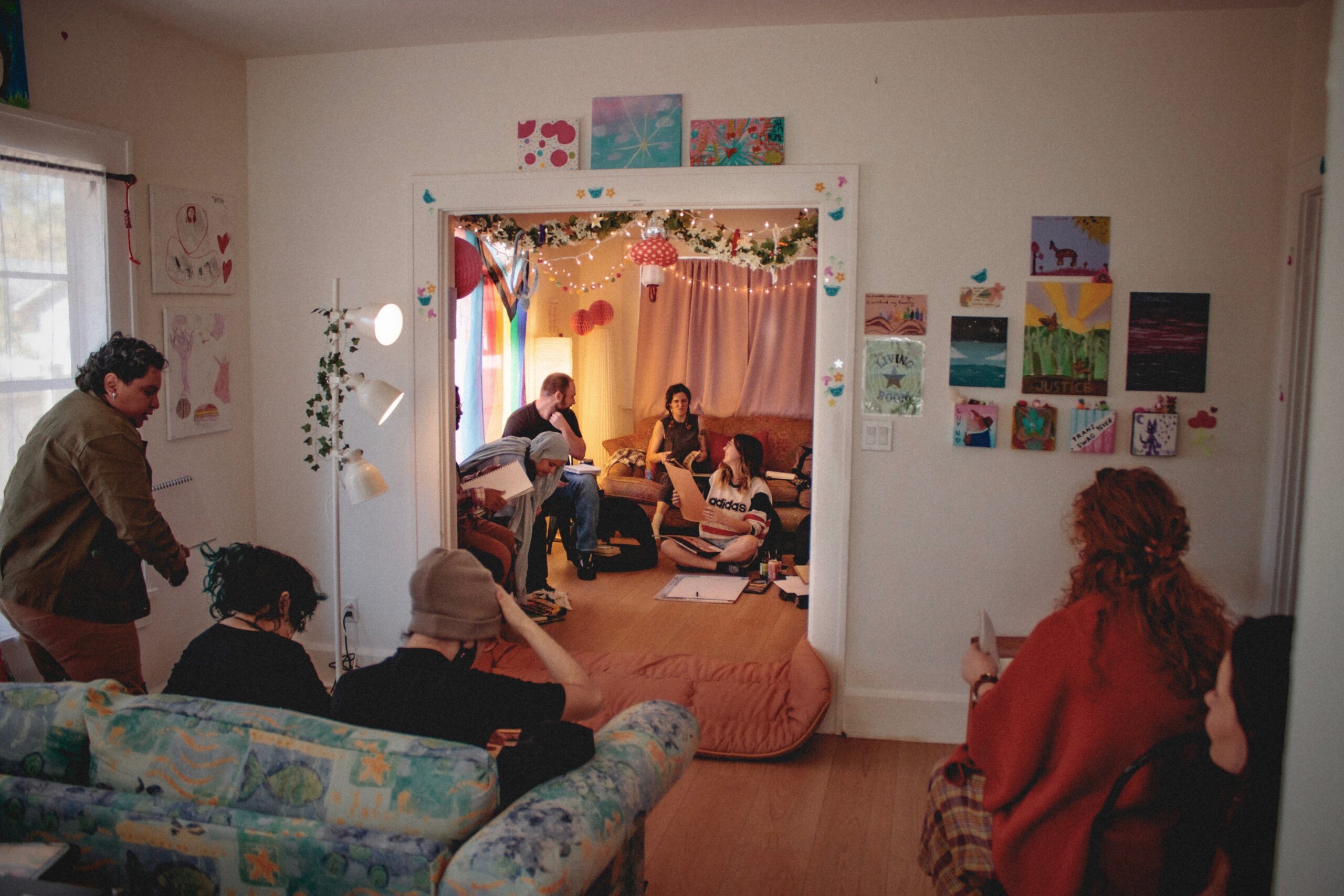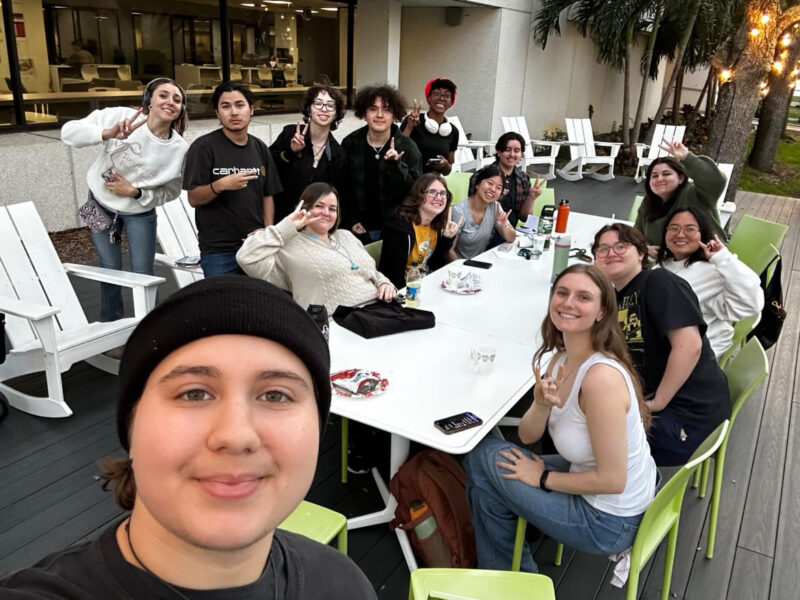Gathering at the training grounds early in morning with fog blanketing the atmosphere, a group of students broke into smaller sections to rotate to different training stations. Then they tackled an obstacle course, repelled walls, trained with weapons and participated in scenario-based shoot-outs.
On Friday, March 2, first year and second year cadets from USFSP’s Reserves Officers’ Training Corps program gathered with other ROTC programs at the Hillsborough County Sherriff’s Range to train.
“[ROTC students] want to be here,” said USFSP’s Major Scott Macksam. “They want to make a difference in other peoples’ lives, they want to go out and make a difference in the community, and the big thing is being part of something bigger than themselves.”
Each semester the ROTC at USFSP participates in some sort of training exercise. The ROTC program offers two and four year programs for students who are interested in becoming Army officers upon graduation. Some were in uniform, but those still waiting to be officially contracted into the Army wore regular clothing. In order to get contracted, they have to pass a physical fitness test, and a medical and background check.
Hearing the word “attention,” all cadets stood tall in respect and shouted, “We can, we will!”
They were given the breakdown about the different training sites and were reminded that it’s just for “instructional fun;” they don’t have to be experts.
The scenario-based shoot-outs were conducted on a swampy path with tall grass, a ridge and mosquito infested trails leading off into the woods. Cadets were warned about alligators in the ponds and to pay attention to their surroundings. They were given guns, a scenario, a mission and their execution plan. They had 25 minutes to find their missing aviator using a compass. Wandering off somewhat unprepared because no one actually had a compass, they crept into the woods. Within minutes snipers hiding in the brush were shooting them at. They returned from their mission covered in paintball splatter, pretending to carry the “injured.”
“The only thing I was scared about was the paintball because I’ve never been paintballing before,” said pre-medicine freshman Megan Sugg. “I’ve always heard that you get huge bruises from it. It’s really painful, and today I got hit on the tailbone, which wasn’t the greatest but I lived through it.”
Over at the shooting range, cadets were given the opportunity to shoot real M4 semi-automatic guns. The difference between a semi-automatic and an automatic is that the semi only shoots one bullet as the trigger is pulled. Then it automatically loads the next bullet, but you must pull the trigger again in order to fire it. In an automatic, it will continue firing bullets as long as the trigger is pulled down.
The M4’s are all on safety to start, but with a simple thumb flip the gun can be turned to semi or burst, a setting that allows the gun to release three rounds with the pull of one trigger.
Instructed to lay on the ground with the gun propped against sand sacks for support, one hand rested on the barrel and the other ready to pull the trigger, everyone was required to wear earplugs, safety glasses and a helmet. The powerful guns echoed across the training grounds.
“The more experience you have, the more comfortable you get,” said sophomore history major Robert Knabel, who went to basic training over the summer and was familiar with the soldiering skills they were exposed to on Friday.
Down the hill at the obstacle course, students climbed through all sorts of large jungle gym objects, practicing different physical skills. Starting with rope climbing, cadets were instructed by USFSP student Matthew Van Arsdall, who is ranked a Military Science Four because of his prior service in the National Guard.
They walked across a moving balance beam, climbed an inclined A-frame, crawled through tunnels and scaled a wired fence and a rope ladder.
“The reason why we do this is to overcome your fear of the obstacles that we go through, so that when you lead troops, your troops will be fearing, and leaders need to overcome that and get in front and lead without that fear,” Macksam said.
The last station was repelling. Climbing the stairs to the top of an 80 foot structure, cadets were harnessed and dropped backwards, repelling down the structure gripping a rope with their glove covered hands, using their feet to repel themselves off of the wooden building. Encouraging each other, they cheered, “Don’t think about it,” as some of their fellow cadets were afraid to make the initial step off of the edge.
Freshman criminology major Coby Goodwin had never repelled before. Waiting in line for her turn she was “terrified.” Afterwards, she was able to laugh it off.
“OK … repelling. Just my fear of heights, just having to put mind over matter,” Goodwin said. “I was up there for 10 minutes just shaking, mostly it was the heights.” Beaming, she said she definitely plans to do it again.
Some dragged their feet most of the way down the building, scared to bounce off, while others bounced down the wall like it was nothing. They were spotted by someone at the top of the building and fellow cadets held the ropes at the bottom.
“The hardest part is just leaning back,” said Sugg, who has gone repelling before but sympathizes with the first-timers.
Finishing their training day with pizza, they all sat in the grass reflecting on the different stations, the things they learned and the things they feared.
“Most of it has been mental,” Sugg said. “You have to get over your fears if you have any.”
Photo by Christopher Guinn



